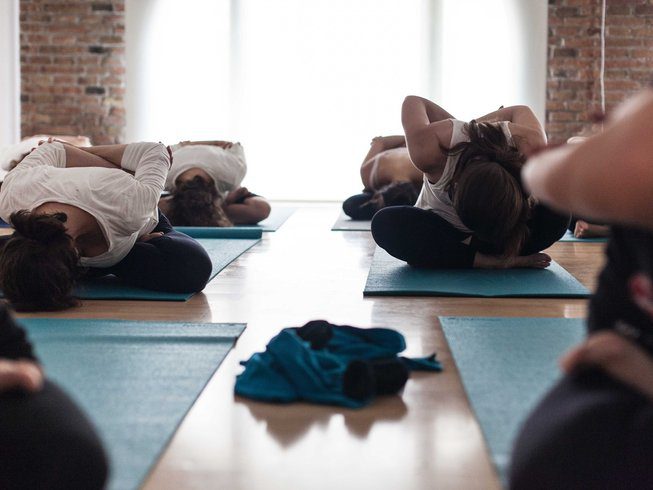Introduction to Trekking in Sikkim: Where Silence Meets the Sky
Trekking in Sikkim is not about chasing touristy dreams; it’s about walking through ancient forests, watching prayer flags flutter at impossible heights, and catching your breath—not just because of the altitude, but because the land demands it. This northeastern Indian state is a sanctuary for those who seek quiet paths, crisp mountain air, and trails that tell stories older than maps.
Sikkim sits nestled between Nepal, Bhutan, and Tibet, and its culture reflects this rich convergence. Every step here, especially on trekking trails, passes through monasteries, tribal hamlets, rhododendron forests, and some of the highest mountain passes in the world.
Why Trekking in Sikkim Offers More Than Just Scenery
Trekking in Sikkim is not a tourist checklist item. It’s a commitment to walking slowly through untouched Himalayan terrain. Unlike some commercial trails in northern India, Sikkim maintains a sense of solitude.
There are no crowds. The terrain speaks in whispers—winds through pine forests, the soft crunch of snow under boots, and distant yak bells. Trekkers often return not just physically stronger but mentally transformed.
Some reasons this region stands apart:
- Biodiversity: Sikkim is home to rare alpine plants, red pandas, and over 500 species of birds.
- Cultural Touchpoints: Ancient monasteries like Dubdi and Pemayangtse lie en route.
- Altitude Variety: From lush valleys to glacial zones, treks here span multiple ecosystems.
- Less Commercial, More Real: Local guides, traditional food, and fewer built-up rest stops keep it authentic.
Popular Routes for Trekking in Sikkim
Sikkim’s landscape is layered, offering trails for beginners as well as high-altitude veterans. Each route has a personality, and choosing one depends on your purpose—scenic beauty, cultural immersion, or alpine challenge.
1. Goechala Trek: A Close Look at Mt. Kanchenjunga
Arguably the crown jewel of trekking in Sikkim, the Goechala trek brings you face-to-face with the third-highest mountain in the world. It’s not about summiting—it’s about reverence.
- Basecamp: Yuksom
- Max Altitude: 15,100 ft
- Duration: 9–11 days
- Best Time: April–May, September–November
The trail passes through dense forests, wooden bridges, alpine meadows, and the spectacular Samiti Lake. From Dzongri Top, trekkers catch the sunrise hitting the face of Kanchenjunga—a moment described by many as spiritual, not scenic.
2. Dzongri Trek: Short and Impactful
If you want the Kanchenjunga views without the full stretch of Goechala, Dzongri is the ideal route.
- Basecamp: Yuksom
- Max Altitude: 13,700 ft
- Duration: 5–6 days
- Best Time: Mid-March to June, Mid-September to early December
This trek is physically challenging but logistically simpler, making it a strong choice for intermediate trekkers. It also allows time to acclimatize and soak in the landscapes without rushing.
3. Green Lake Trek: Raw and Rare
This one’s for purists. The Green Lake trek is not heavily advertised, and that’s a good thing. It’s quieter, harder, and runs parallel to the base of Kanchenjunga’s eastern face.
- Basecamp: Lachen
- Max Altitude: 16,000+ ft
- Duration: 10–12 days
- Best Time: April–May, October–November
You pass through Thangu, Jakthang, and the high moraine landscapes. Trekkers often describe this route as more meditative than picturesque—though it’s both.
4. Singalila Ridge Trek: A Borderline Beauty
This trek traces the Indo-Nepal border, and on a clear day, offers views of Everest, Lhotse, Makalu, and Kanchenjunga—all in one panorama.
- Basecamp: Uttarey or Hilley
- Max Altitude: 12,000 ft
- Duration: 8–10 days
- Best Time: March–May, October–November
The Singalila route is known for wildflowers in spring, endless ridgelines, and old-world villages. It’s an ideal trek if you’re looking to avoid crowds but still crave great mountain views.
The Best Season for Trekking in Sikkim
Sikkim’s trails are open in two main seasons—pre-monsoon and post-monsoon. Each offers a distinct experience.
- Spring (April to May): The forests bloom with rhododendrons. It’s colorful, moderately cold, and ideal for those who love natural variety.
- Autumn (September to November): Crisp skies, long visibility, and cooler temperatures make this the preferred season for photographers and mountain lovers.
Avoid trekking in the monsoon (June to August) due to landslides and leeches. Winters (December to February) are too harsh for most trails and are recommended only for experienced trekkers with high-altitude training.
Permits and Local Rules: What You Must Know
Because of its sensitive location near international borders, trekking in Sikkim requires permits.
- Inner Line Permit (ILP): Required for all non-residents of Sikkim. Easily obtained online or at entry points like Rangpo.
- Special Trekking Permits: For routes like Goechala, Green Lake, and Singalila. These are often arranged through registered local agencies.
- Foreign Nationals: Must trek in groups of at least two and be accompanied by a licensed guide.
Trekking without permits can lead to legal trouble and abrupt trip cancellations. Always verify documentation needs before starting your journey.
Staying Connected With Nature: Accommodations on the Trail
One thing to understand about trekking in Sikkim—luxury stays are rare, and that’s a part of the charm. You’ll sleep in:
- Tents: Provided by your trekking company, often set up near clearings or riverbanks.
- Teahouses and Homestays: Basic but warm, especially in lower altitude villages like Yuksom or Tshoka.
- Forest Rest Houses: Available on certain routes with prior booking.
These accommodations prioritize warmth, food, and shelter—not Wi-Fi, and definitely not TV. This digital disconnect becomes a vital part of the Sikkim trekking experience.
Food on the Trail: Local, Simple, Nourishing
Meals during trekking in Sikkim are prepared fresh, using locally available ingredients. Expect a mix of:
- Rice, Lentils, and Seasonal Vegetables
- Thukpa (noodle soup)
- Momos (dumplings)
- Churpi (local cheese)
- Butter Tea in high-altitude zones
Food is generally vegetarian, warm, and filling—designed to keep your energy levels steady in thinning air.
Physical Preparation: Readying Yourself for Sikkim’s Trails
Trekking in Sikkim is not just about booking the right route. The trails are steep, often slippery, and unpredictable in weather. You should begin preparing at least a month in advance.
- Cardio Training: Brisk walks, jogging, cycling
- Strength Workouts: Focus on legs, back, and shoulders
- Breathing Exercises: Help with high-altitude adjustment
- Hiking Practice: Weekend hikes with a loaded backpack help build stamina and familiarity
Environmental Ethics: Leave Sikkim Better Than You Found It
Sikkim is one of India’s cleanest and most environmentally conscious states. Trekking here comes with responsibility:
- Avoid plastic use – carry reusable bottles and containers.
- Use bio-degradable soaps and toiletries.
- Follow the ‘carry in, carry out’ principle.
- Respect wildlife and never veer off marked trails.
By being a mindful trekker, you help protect these trails for future wanderers.
Final Thoughts on Trekking in Sikkim
Trekking in Sikkim is not for those seeking quick thrills or social media validation. It’s for those who find joy in walking 10 kilometers without seeing another soul, for those who measure moments in starlight and silence, and for those who feel at home among windswept trees and shifting clouds.
The region has earned its reputation not through flashy promotions but through whispered recommendations passed from one true trekker to another. If you choose to walk here, walk slowly—and let the land write something inside you that no photograph ever will.






